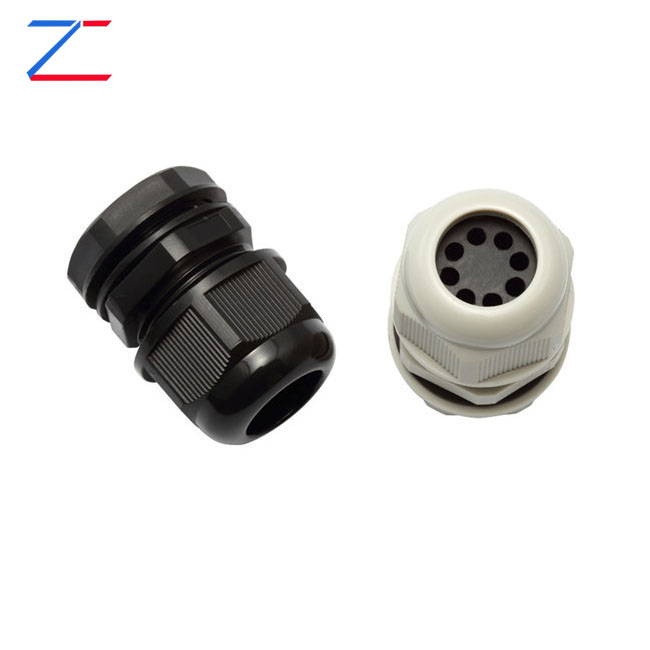Nylon Cable Gland: A Durable Solution for Secure Cable Management
2025-03-22
In today's world of electrical installations and cable management, ensuring the safety and security of electrical systems is paramount. One of the most essential components in achieving this is the cable gland. Among the various types of cable glands available, the nylon cable gland stands out for its durability, versatility, and affordability. In this blog, we’ll take a closer look at what nylon cable glands are, why they are essential, and their applications in various industries.
What is a Nylon Cable Gland?
A nylon cable gland is a mechanical device used to secure and protect the ends of electrical cables as they pass through enclosures, panels, or equipment. Made from high-quality nylon, these glands provide a reliable means of sealing cables, preventing water, dust, or other environmental factors from entering sensitive electrical systems. They are widely used to ensure the proper sealing and grounding of cables, preventing accidental damage or electrical failures.
Nylon cable glands typically consist of a body, a sealing ring, and a nut that tightens the gland to hold the cable in place. They work by providing a secure entry point for cables, sealing the gap between the cable and the panel or enclosure while ensuring that the cable remains firmly in position.
Why Choose Nylon Cable Glands?
1. Durability: Nylon is a strong and durable material, capable of withstanding harsh environmental conditions. It is resistant to impacts, abrasions, and chemical exposure, making nylon cable glands ideal for use in rugged and demanding environments.
2. Weather Resistance: Nylon cable glands are designed to be highly resistant to moisture, dust, and extreme temperatures. They provide an excellent seal, preventing water and dust from entering electrical systems, thus ensuring the safety and longevity of the equipment.
3. Easy Installation: Nylon cable glands are lightweight and easy to install. They typically feature a simple design with a few components, making them ideal for quick installations without the need for special tools or skills.
4. Cost-Effective: Compared to other materials like brass or stainless steel, nylon cable glands are often more affordable, making them an excellent choice for cost-conscious projects without compromising on performance or reliability.
5. Electrical Insulation: Nylon provides excellent insulation properties, preventing accidental short circuits or electrical faults that may arise from poor cable management. This is especially important in systems where electrical safety is a primary concern.
6. Flexibility: Nylon cable glands are available in a wide range of sizes and thread types, making them adaptable to various cable diameters and installation requirements. This flexibility ensures that they can meet the needs of different projects and environments.
Applications of Nylon Cable Glands
Nylon cable glands are used in a wide variety of industries due to their versatility and reliability. Some of the most common applications include:
1. Electrical Enclosures: Nylon cable glands are commonly used to seal the entry points of cables in electrical enclosures, protecting electrical equipment from moisture, dust, and dirt.
2. Industrial Equipment: In industrial settings, where machinery and equipment are exposed to harsh environments, nylon cable glands ensure that cables are securely held in place and protected from external elements.
3. Automotive Industry: In vehicles and machinery, nylon cable glands are used to prevent cable damage caused by vibrations, extreme temperatures, and exposure to oils, fuels, and other chemicals.
4. Renewable Energy Systems: In solar power installations and wind turbines, nylon cable glands are used to seal and protect cables, ensuring that electrical systems remain safe and functional in all weather conditions.
5. Telecommunications: Nylon cable glands are also used in telecommunications applications to protect cables and connectors from environmental factors, ensuring the integrity of communication systems.
6. Marine and Offshore: For marine applications where equipment is exposed to saltwater and harsh weather conditions, nylon cable glands provide a high level of corrosion resistance and a secure seal to protect electrical components.
How to Choose the Right Nylon Cable Gland
When selecting a nylon cable gland, there are several factors to consider to ensure you choose the right one for your needs:
1. Cable Diameter: The cable gland must be the right size for the diameter of the cable being used. Choosing the correct size ensures a proper seal and prevents damage to the cable or gland.
2. Environmental Conditions: Consider the environmental factors where the cable gland will be used. If the installation is in a damp or dusty environment, make sure to choose a gland with a high IP (Ingress Protection) rating to ensure maximum sealing.
3. Thread Type: Nylon cable glands come in different thread types, including metric, PG (Panzer-Gewinde), and NPT (National Pipe Thread). Ensure you select the correct thread type for compatibility with your equipment and installation.
4. Temperature Range: Check the temperature range of the nylon cable gland to ensure it can withstand the operating conditions of your application.
Conclusion
Nylon cable glands are an essential part of modern electrical installations, offering a reliable, cost-effective, and durable solution for cable management. Whether you are working in industrial, automotive, telecommunications, or marine applications, nylon cable glands provide secure cable entry and protection, ensuring that your electrical systems remain safe and functional. Their weather resistance, easy installation, and affordability make them an excellent choice for a wide range of projects, providing long-term protection and peace of mind.



